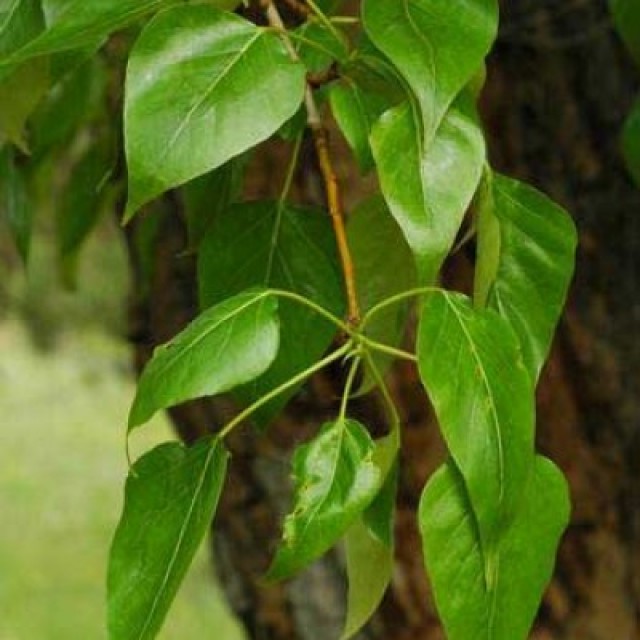COMMON NAME
Balsam poplar
SCIENTIFIC NAME
Populus balsamifera
ALSO KNOWN AS
Black cottonwood, Populus trichocarpa
Plant family
Willow (Salicaceae)
Plant group
Deciduous Trees and Shrubs
Balsam poplar trees (also known as cottonwoods) have rounded, lance-shaped leaves with short stems and fruits that are capsules which split in 2 parts.
115 reports
47+
OBSERVERS
115+
OBSERVATIONS
Identification hints
Cottonwoods are extremely variable because they often hybridize between species. Balsam poplar is unique in having rounded lance-shaped leaves with short stems. Plains cottonwood has a more triangular (deltoid) leaf shape with rounded teeth and may occur close to balsam poplar at the eastern foot of the Rocky Mountains. Another species, narrow-leaved cottonwoods, have leaves 2.5 times longer than wide. Balsam poplar has capsules which split in 2 (rather than 3 parts as in Black cottonwoods).
Did you know?
Balsam poplar is a commercially valuable tree with the primary products including particle board, plywood, veneer, and lumber. Native Americans used the resin from buds to treat sore throats, coughs, lung pain, and rheumatism. It is still used in some modern natural health ointments. These trees create some of the most biodiverse communities in the northern Rockies providing habitat for many bird and insect species. They are declining because of dams and other alterations of river habitats.
DISTRIBUTION IN TH U.S.
Alaska
,
California
,
Colorado
,
Connecticut
,
Delaware
,
Iowa
,
Idaho
,
Illinois
,
Indiana
,
Massachusetts
,
Maryland
,
Maine
,
Michigan
,
Minnesota
,
Montana
,
North Dakota
,
New Hampshire
,
Nevada
,
New York
,
Ohio
,
Oregon
,
Pennsylvania
,
Rhode Island
,
South Dakota
,
Utah
,
Virginia
,
Vermont
,
Washington
,
Wisconsin
,
West Virginia
,
Wyoming
HABITAT
Balsam poplar grows on alluvial sites, riparian habitats, and in moist woods on mountain slopes from Alaska to the Rocky Mountains, and also across the entire northern tier of the continent, including the upper midwest, the mid-Atlantic, and New England. It often forms extensive stands on bottomlands of major streams and rivers at low elevations. In drier areas it is restricted to protected valleys and canyon bottoms, along stream banks, and edges of ponds and meadows. It grows on a variety of soils from moist silts, gravels, and sands to rich humus, loams, and occasionally clays.
ATTRIBUTES
Leaves
Leaves are simple and alternate. They vary in size and shape on the same tree from broadly triangular (deltoid) to lance-shaped -- longer than they are wide, with a broad base (oval to lance-shaped). Leaves are rounded or heart shaped (cordate) at the base. They are generally 2.7 to 4.7 in (7 to 12 cm) long and 1.3 to 3 in (3.5 to 7.5 cm) wide. The margins are finely toothed, dark green above, and slightly paler beneath, commonly with whitish or brownish resin blotches, turning yellow in autumn. The leaves are hairless or nearly so. The petioles (the stalk that attaches the leaf to the plant) are round and short (approximately 3 to 4 mm or about a tenth of an inch long).
Flowers
Tiny, long, slender flowers hang in loose catkins. Male (staminate) and female (pistillate) flowers are found on separate trees (dioecious). Flowering generally occurs from late March to June, just before or during leaf emergence.
Fruits
Fruits are egg-shaped, green capsules in hanging catkins (long, caterpillar-like structures). Ripe capsules split into 2 parts. Tiny seeds have a tuft of soft, white hairs at the tip and are often dispersed in large, fluffy masses. Fruiting occurs in late May to early or mid-July and when rivers are most often in the flood stage.
Bark
Bark is gray to gray-brown on mature trees and deeply furrowed into flat ridges on older portions of the tree.
See Menu
- 2021 Chicago Botanic Garden. All Rights Reserved.
-
Creative Commons
BY-NC-SA 4.0 - Terms of Use
- Privacy Policy
- Data Sharing and Citation Policies
- 2021 Chicago Botanic Garden. All Rights Reserved.



